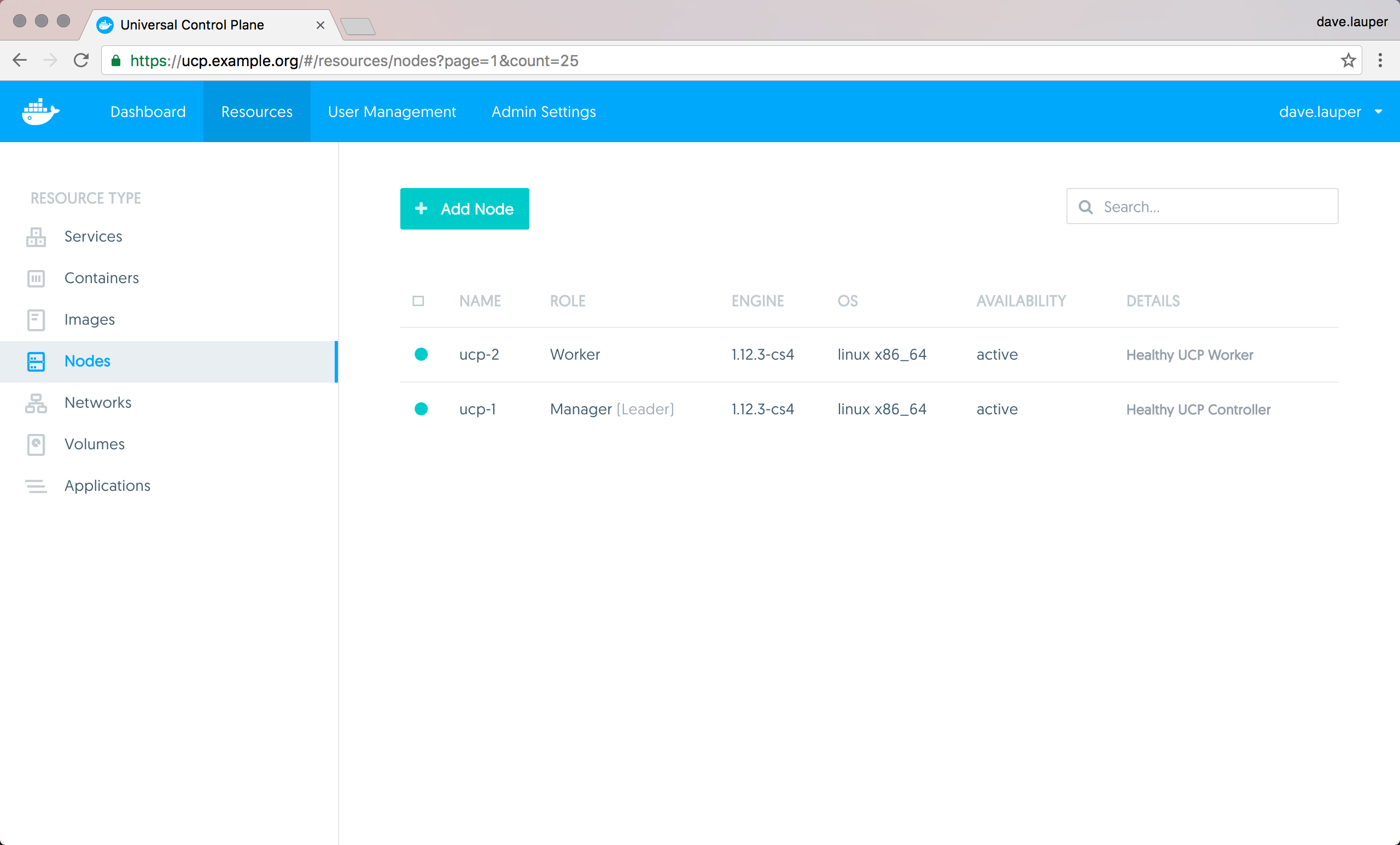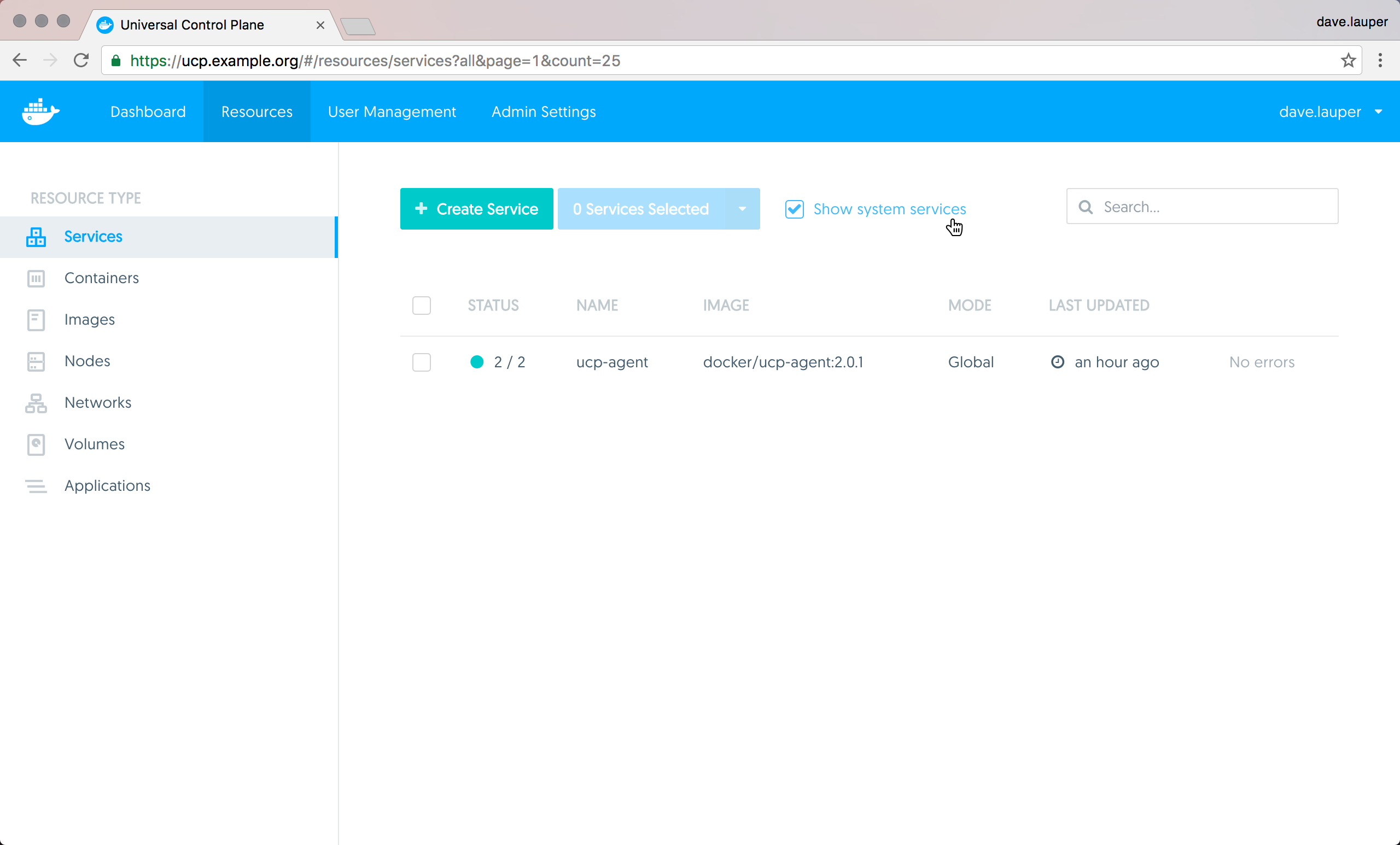Monitor your cluster
Estimated reading time: 2 minutesThis article gives you an overview of how to monitor your Docker UCP.
Check the cluster status from the UI
To monitor your UCP cluster, the first thing to check is the Nodes screen on the UCP web app.

In the nodes screen you can see if all the nodes in the cluster are healthy, or if there is any problem.
If you’re an administrator you can also check the state and logs of the UCP internal services.
To check the state of the ucp-agent service, navigate to the Services page
and toggle the Show system services option.

The ucp-agent service monitors the node where it is running, deploys other
UCP internal components, and ensures they keep running. The UCP components that
are deployed on a node, depend on whether the node is a manager or worker.
Learn more about the UCP architecture
To check the state and logs of other UCP internal components, go to the Containers page, and apply the System containers filter. This can help validate that all UCP internal components are up and running.

It’s normal for the ucp-reconcile to be stopped. This container only runs when
the ucp-agent detects that a UCP internal component should be running but for
some reason it’s not. In this case the ucp-agent starts the ucp-reconcile
service to start all UCP services that need to be running. Once that is done,
the ucp-agent stops.
Check the cluster status from the CLI
You can also monitor the status of a UCP cluster using the Docker CLI client. There are two ways to do this, using a client certificate bundle, or logging into one of the manager nodes using ssh.
Then you can use regular Docker CLI commands to check the status and logs of the UCP internal services and containers.
Automated status checking
You can use the https://<ucp-url>/_ping endpoint to perform automated
monitoring tasks. When you access this endpoint, UCP validates that all its
internal components are working, and returns the following HTTP error codes:
- 200, if all components are healthy
- 500, if one or more components are not healthy
If you’re accessing this endpoint through a load balancer, you have no way to know which UCP manager node is not healthy. So make sure you make a request directly to each manager node.